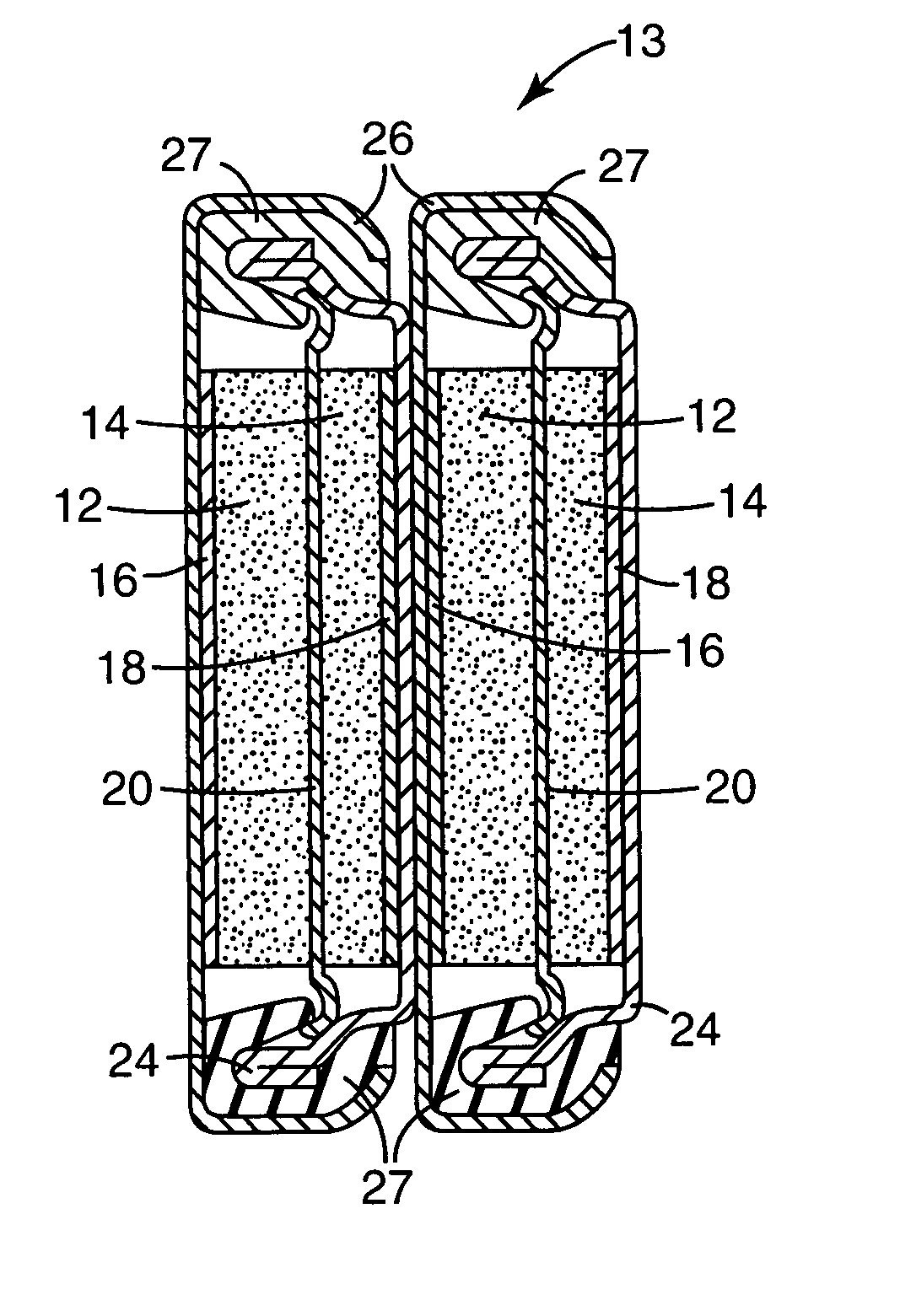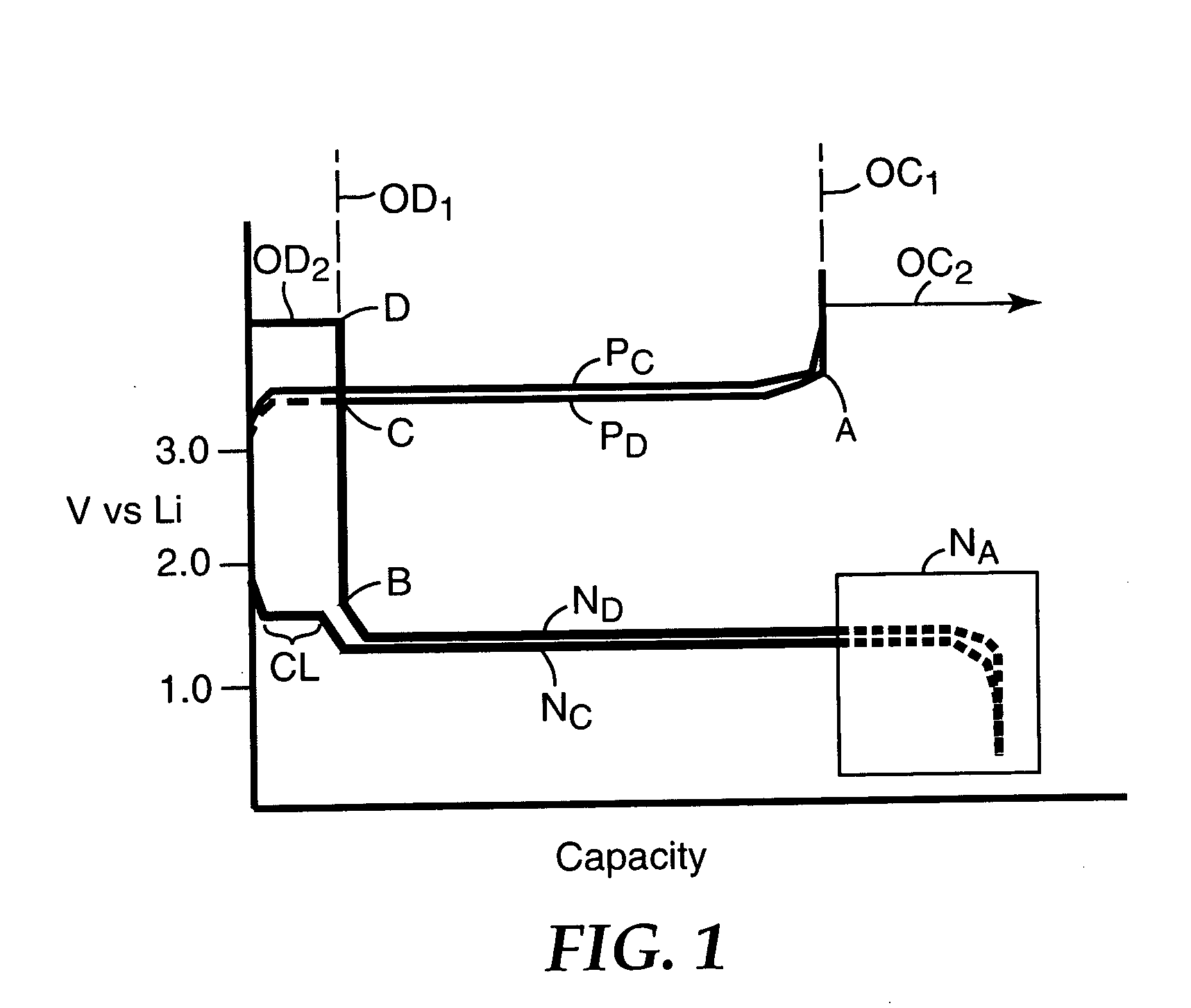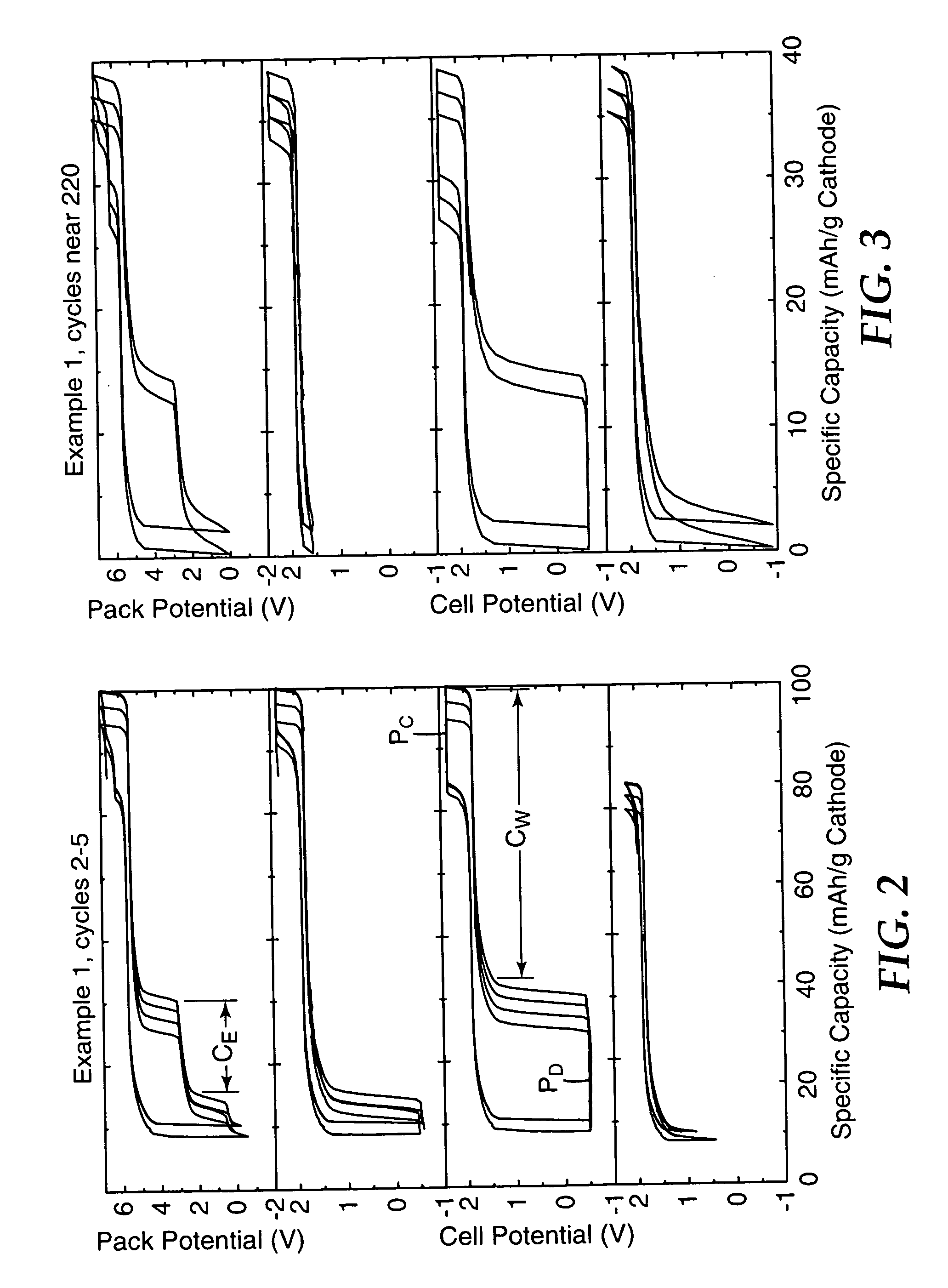Redox shuttle for overdischarge protection in rechargeable lithium-ion batteries
a rechargeable lithium-ion battery and overdischarge protection technology, applied in the direction of non-aqueous electrolyte cells, indirect fuel cells, cell components, etc., can solve the problems of large irreversible first cycle capacity loss of battery may catch fire or explode, and weak cells in series strings may well have been driven far into reverse, etc., to achieve large irreversible first cycle capacity loss, wide window, and increase the potential of negative electrodes
- Summary
- Abstract
- Description
- Claims
- Application Information
AI Technical Summary
Benefits of technology
Problems solved by technology
Method used
Image
Examples
example 2
[0068] Using the general method of Example 1, a three-cell battery was assembled from two stronger cells and one weak cell, but using the lithium salt LiPF6 (manufactured by Stella Chemifa Corp., Japan and obtained from E-One / Moli Energy) rather than LiBOB in the electrolyte. FIG. 8 is a four panel plot showing battery and cell potential versus cathode specific capacity for the Example 2 battery (top panel) and for its 3 individual cells (remaining panels) after 70 to 74 cycles. The second panel from the bottom illustrates the weak cell's behavior. The shuttle provided overcharge and overdischarge protection and permitted the weak cell's negative electrode to be driven into reversal while preventing the negative electrode from reaching a destructively high potential.
[0069] The second panel from the top includes high and low voltage spikes at the left end of the drawing. These were measurement artifacts, caused by measuring the potential of only two of the cells and of the battery a...
example 3
[0070] Using the general method of Example 1, a two-cell battery was assembled from two used cells that had already been subjected to overcharge / overdischarge cycling. Each cell employed a Li4 / 3Ti5 / 3O4 negative electrode on a copper current collector and a LiFePO4 positive electrode on an aluminum current collector. The first cell had been cycled between 2.4 and 0 V at a “C / 2” (two hour charge and two hour discharge) rate for 57 cycles, using a 100% overcharge (viz., an overcharge charge flow equivalent to 100% of the cell capacity) during each charging cycle, then at a “C / 5” (five hour charge and five hour discharge) rate for a further 10 cycles. The second cell had been cycled between 2.4 and 0 V at a C / 4 rate for 10 cycles, using a 100% overcharge during each charging cycle. Owing in part to their different cycling history, these cells now had different capacities, with the second cell exhibiting weaker behavior. The cells were assembled into a two-cell pack and cycled between 4....
PUM
| Property | Measurement | Unit |
|---|---|---|
| negative electrode potential | aaaaa | aaaaa |
| electrochemical potential | aaaaa | aaaaa |
| terminal voltage | aaaaa | aaaaa |
Abstract
Description
Claims
Application Information
 Login to View More
Login to View More - R&D
- Intellectual Property
- Life Sciences
- Materials
- Tech Scout
- Unparalleled Data Quality
- Higher Quality Content
- 60% Fewer Hallucinations
Browse by: Latest US Patents, China's latest patents, Technical Efficacy Thesaurus, Application Domain, Technology Topic, Popular Technical Reports.
© 2025 PatSnap. All rights reserved.Legal|Privacy policy|Modern Slavery Act Transparency Statement|Sitemap|About US| Contact US: help@patsnap.com



